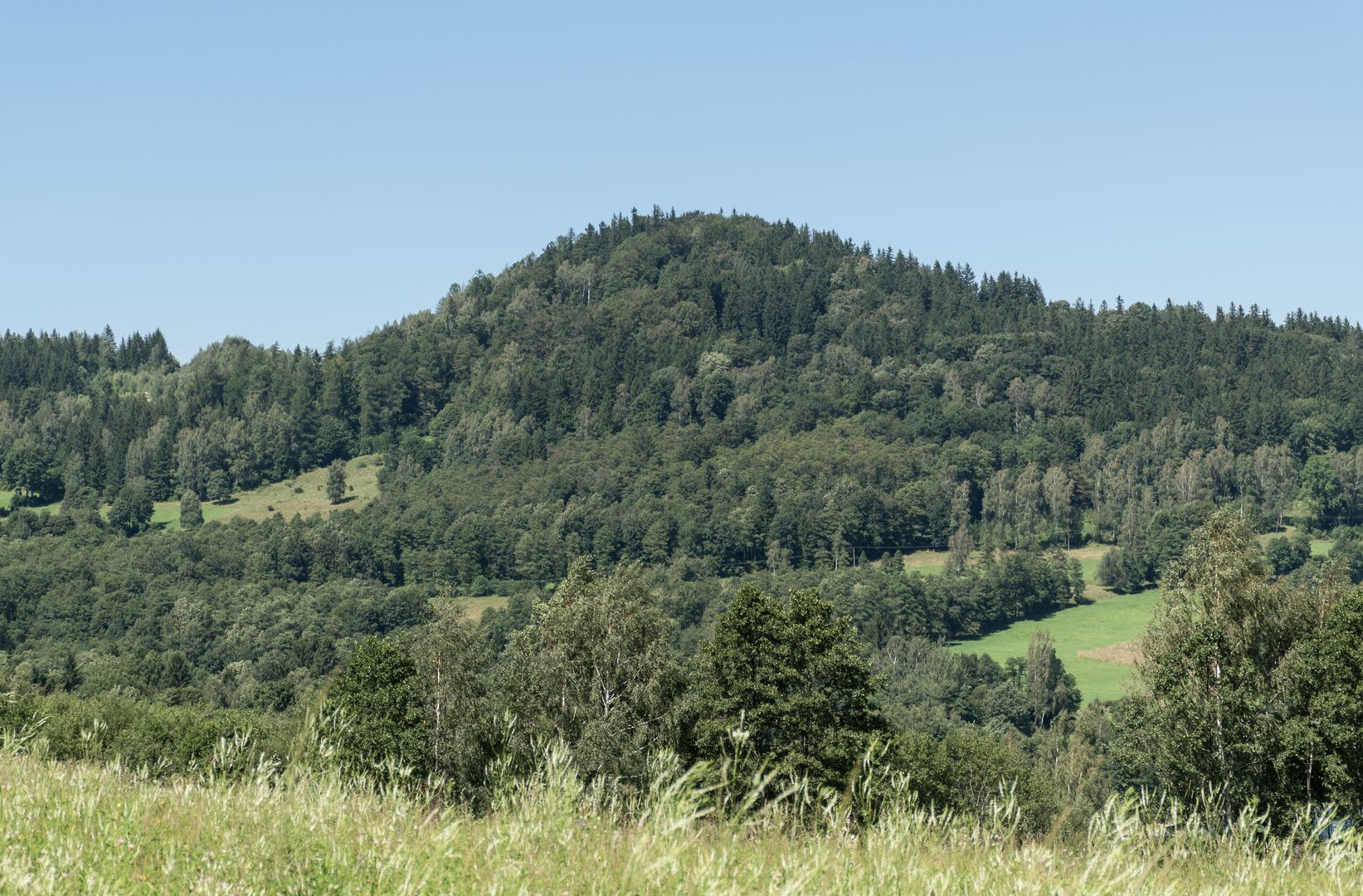Krzyżnik
6

Overview
Krzyżnik is a mountain with an elevation of 701 meters above sea level, located in the Śnieżnik Massif near Stronie Śląskie. Geologically, it is primarily composed of Neoproterozoic to Upper Cambrian schists, amphibolites, and gneisses, as well as zoisite-bearing erlans. Its mineral wealth includes garnets, diopside, and staurolite. From a tourism perspective, the slopes of Krzyżnik are traversed by a yellow hiking trail that leads to the Bear Cave (Jaskinia Niedźwiedzia), offering panoramic views of the valley and the town. At the foot of the mountain lies a recreational reservoir, and marble can be collected on the scree slopes.
The history of Krzyżnik is rich with intriguing events, such as the construction of the Chapel of St. Onuphrius in the 18th century, intended to counteract pagan rituals associated with the cult of Żywia. In the 20th century, the mountain was a site for uranium ore exploration, and in the 1970s, plans were made to develop tourism as part of the "Second Zakopane" project, which led to the construction of a ski lift.
Krzyżnik is also known for marble extraction. Deposits such as Biała Marianna, with their high calcium carbonate content, were used in prestigious constructions, including the Palace of Culture and Science in Warsaw. The area's natural environment is protected under the ecological site "Biała Marianna," which safeguards unique floral and faunal species, including bats. Three caves were once discovered on the slopes, one of which, the Warsaw Cavers' Cave (Jaskinia Warszawiaków), has survived to this day.
Thus, Krzyżnik is a place that combines geological, historical, and cultural richness, making it attractive to both tourists and researchers.
Location
2025 Wizytor | All Rights Reserved